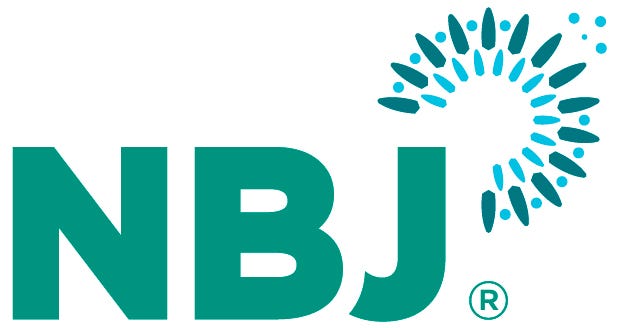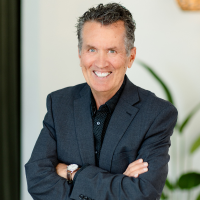
As every farmer knows, putting the seed in the ground is far from the last step, but as supplement brands turn to regenerative agriculture to source ingredients, planting the seeds of a new supply chain has been no small task on its own.
Not only are companies having to find new sources for ingredients, implement new transparency procedures and figure out whether and how to market “regenerative” as an added value for consumers, they also have to be part of saving regenerative from slipping into buzzword status. These challenges, however, present an opportunity for the supplement industry to lead other sectors in helping to change the trajectory of climate change while saving the habitats that anchor the supply chain. Without regenerative agriculture, the very future of the industry is in peril, as climate change threatens growing regions with drought, storm, sea level rise and political instability driven by all of the above.
It’s a seismic-scale mission, no matter how many seeds are in the ground. Bethany Davis, who has helped shape the regenerative sourcing program at MegaFood, says the tasks are so large and so many that no company should look to take on all of them.
“Every single person and every single company have to kind of ask themselves ‘What is mine to do? What is our zone of genius like? Where do we make the biggest impact?’ Because there are so many things to focus on, and there’s not one way to do it.”
The first of those many tasks may be the hardest, say those with experience in regenerative sourcing, but also the most fulfilling. That first step is making the commitment, and it means a company-wide appraisal of the motivation and the depth of that motivation. CEOs may be the ones who make the decision, but they need to share the vision with their staff to effect the fundamental changes required. Herb Pharm CEO Tal Johnson advises brands to “make sure you’ve got support and buy-in from the entire company and your senior management,” and his farm manager, Matt Dybala puts it simply: “I would say, ‘don’t go out and do this just for another badge on the website.’”
David Karr, co-founder at Guayaki Yerba Mate, doesn’t discount the difficulty but believes that, for most brands, much of it will fall into place if the commitment is genuine. “If it’s part of your DNA, and you’re someone who’s authentically doing it for the right reasons, you’re ultimately going to be coming up with a winning formula.”
Indeed, proponents of the shift to regenerative agriculture see the move as more of an opportunity than a daunting task. Regenerative agriculture presents an opportunity, they say, to better define the supplement industry as a force for good, extending the promise of health beyond human nutrition to the wellbeing of the planet. The supplement industry could stand out as a leader, they say.
Regenerative agriculture means healthier soil
At the foundational stage, regenerative agriculture starts with the soil. There are layers upon layers of complexity that come later, but none of them can happen without the farm crew on board. Johnson says the Herb Pharm team not only learned a lot as they converted the land to regenerative practices but they also had to unlearn a lot as well.
“When Herb Pharm started in 1979, I don’t think any of it was mechanized, and it was probably doing a lot of things right in term of regenerative farming,” says Johnson who explains that tractors and other practices were added as the company grew. “We always stayed organic, and we’ve been certified organic for decades, but we probably moved away from some of the methods that were inherently regenerative.”
Dybala works the Herb Pharm acreage in southern Oregon. The old practices were not easily shed for him or his crew. “A lot of farming is ingrained in you at an early age about how it should be done,” he explains, but regenerative agriculture has taught him to look at the land more as an ecosystem, to think about what should grow where on the land. Even on one farm, he can find a space where an herb grows best. “You’re going to find all these little niches, habitats on your land,” he says. “I’ve got wet areas. I’ve got dry areas. I’ve got all these little soil types. They’re there, you just need to be looking for them.”
For Karr, recreating ecosystems is what makes Guayaki’s product possible. Yerba mate grows naturally in rainforests, but conventional farmers cultivate the plants in the sun—where it grows faster, but not better. “It was a tree that grew naturally in the rain forest. And then you’re like, ‘Well, wait a minute. Why is it all just sun-grown on plantations, and they’re spraying roundup on it?’” Guayaki’s regenerative practice has been to raise yerba mate in the forest, cared for by indigenous people, or to reforest the plots where it has been grown in the sun. “The way we approach it is really from a biodiversity and ecosystem approach,” Karr says. “Regenerative agriculture is basically allowing it to grow in its natural environment.”
That attunement to the environment has created new ways for Dybala to connect not just with the land but with his workers. There are new “touchpoints” and interactions for the farm manager and the crew that are built around a goal that’s not just production. Operations are more complex, but there is a greater buy-in from the workers because they can see the results of the changes in the land they are caring for. Dybala, who says he “lives and breathes the land every day,” can see it too. “To me, the biggest benchmark of farming is how healthy our environment is,” Dybala says. “You can start to mimic nature instead of working against it.”
Sourcing sustainably through revamped formulations and farmer relationships
Not everything can be grown on one farm. For supplements with a deep label of ingredients, it’s almost always multiple farms and likely on multiple continents. Setting out to source regeneratively means pushing the supply chain transparency concept to its clearest state. Sara Newmark, chief operating officer at True Grace Health is helping get the brand off the ground with regenerative sourcing core to its mission. It is, she says, “hard.” Hard to the point where it’s impossible, at present, for some formulations and the goal has become continuous improvement rather than the perfectly regenerative product at brand launch. “It’s putting out the best that there is with an intention of shifting a system as you go along, ” Newmark says. “It can’t be perfect right away all the time.”
Part of that real-sizing of the mission has included formulating with fewer ingredients, a process she thinks the entire industry should be looking for as it transitions to regenerative, or at least more sustainable, sourcing. A deep list of ingredients may be marketable, she says, but it might not be the healthiest option, for the consumer or the planet. “Cut the fat,” she says. “I think the supplement industry, in a lot of ways, has dug itself into a hole of thinking that more is better. And so, it’s a lot of unlearning and reteaching that will need to happen.”
For MegaFood, sourcing regeneratively has been based on communication and accountability. The company introduced a Healthy Farm Standard in 2019 that establishes a rubric for assessing regenerative practices but also creates opportunities for conversation between farmer and brand. “We’re actually using a point system,” Davis says, “and it’s tiered as bronze, silver or gold. And there are incentives.”
It’s the incentives that keep the conversation and engagement going. MegaFood can ask farmers what their needs are. They might need a new piece of equipment or help paying for soil testing. Some are using money on pilot studies. That might not happen without the standards and the points system as a check-in, she says. “We want to know, deeply, what’s happening on all these acres where we’re buying from,” Davis says. “It’s an opportunity for us to have a conversation with them every year.”
For Newmark, the tools of transparency that were fashioned for organic, and later non-GMO, make all the challenges that seemed “insurmountable” far more practical now. Farmers and suppliers are used to answering more questions and don’t balk at being asked. “When we talk about, ‘Hey, can you put us in contact with your people supplying these ingredients?’ Or ‘Can you work with us to create a new supply chain?’ The answer these days is always “Yes,’” she says.
Karr sees sourcing regeneratively for ingredients beyond the yerba mate leaves, ingredients that are incorporated into the product for flavoring and other qualities, as an opportunity to engage in helping to grow a more regenerative supply chain. It’s tough work, he says, but necessary and, he hopes, rewarding in the end. “It’s a lot of complex relationships, but we seek out complexity. We’re not afraid of complexity.”
Looking closely at individual ingredients is part of making regenerative work, Karr says. “It’s the really big, but also the very small.”
Regenerative agriculture seals and certifications could provide a shorthand for brands and ingredient suppliers who aspire to a standard that speaks to environmental leadership.
The Regenerative Organic Certified seal appeared on packages for the first time in August. Other certifications established or in the works include the Savory Institute’s Land to Market program and the Soil Carbon Index, a project of The Carbon Underground and Green America. But Newmark doubts the seals will make sourcing easier in the short term.
“In a lot of ways, certifications make things easier because it makes it more turnkey and more clear. On the other side, it can make things more complicated. There’s more red tape. There’s more, just the realities of bureaucracy, whether it’s a government program or independent program, and that can slow the growth of things.”
Brands will still have work to do, Newmark says. “It’s hard” isn’t going away.
Share regenerative values with shoppers the right way
When considering whether and why to go regenerative, many brands won’t be thinking about a “marketing advantage.” But while the commitment may not be commercial, brands that have gone regenerative are still faced with how to talk to consumers about it. Nobody is leading with regenerative just yet.
For Newmark and True Grace, the selling point for regenerative has been more about nutrition than the environmental advantages that have garnered most of the attention for the movement. “I think one thing we’ve all learned is that if you only focus on the environment, the messaging gets lost sometimes for people,” Newmark says. The brand has instead talked about regenerative agriculture in terms of nutrient density and how food grown in depleted soils is not as nutrient-rich as ingredients that come from regenerative agriculture. A health-oriented brand should be good at talking about health, she says. “I think that is one way to unlock the messaging for our consumers because it’s about them.”
At Herb Pharm, Johnson says the company is still figuring out how to talk to consumers about regenerative agriculture. Making a consumer play was never really the motivation, he says. So far, the communication around regenerative has been “more internal than external.”
Karr says the regenerative aspects of Guayaki’s ingredients matter to a certain kind of consumers, one curious enough to explore the brand’s ecosystem focus, but the pitch for the product has never included the word “regenerative.” “Shade grown” and “organic” are the key differentiators, he says. “I would still venture to say the majority of the people who are enjoying our product don’t even know any of that. And they’re actually just buying it because it does actually taste better.”
The movement needs new ideas to succeed
As Davis explains it, a challenge as big as converting the agricultural system to regenerative practices is not just an all-hands-on-deck matter. It’s all ideas on deck.
At MegaFood, the big idea is connecting a network of suppliers, brands, innovators and whoever else wants to join the conversation. “We’re super connectors.” Davis recently led a seminar for the Sustainable Herbs Program that drew “six or seven hundred” registrants, and she got dozens of emails after the event. “We’re very happy to share what we’re doing with people. If more people want to adopt it, that’s great Everybody needs to learn from everybody else.”
Dybala says he has drawn on books, websites and white papers from the Rodale Institute. But he has also appeared on stage at Supply Side West to share what he has learned. That kind of sharing of expertise, knowledge and networks is going to be essential if the supplement industry is going to scale up regenerative sourcing, Newmark says. “If I started a brand today, and I had no background in this industry, and if the mission of my brand was to be regenerative, it would be really hard without all the connections,” she says. “A lot of my ability to do this has been because I’ve spent years in community with people.”
Davis says she expects the networks to grow in ways people who’ve done the early work might not imagine. That’s the only way networks do grow, she says. “It’s cyclical. Some people are going to get ahead and lead, and some people are going to catch up,” she says. “That’s just how the universe works. It’s certainly how agriculture works.”
This article was featured in the Nutrition Business Journal Guest Editor Issue. The guest editor was supplement industry veteran Tom Newmark.
About the Author
You May Also Like





